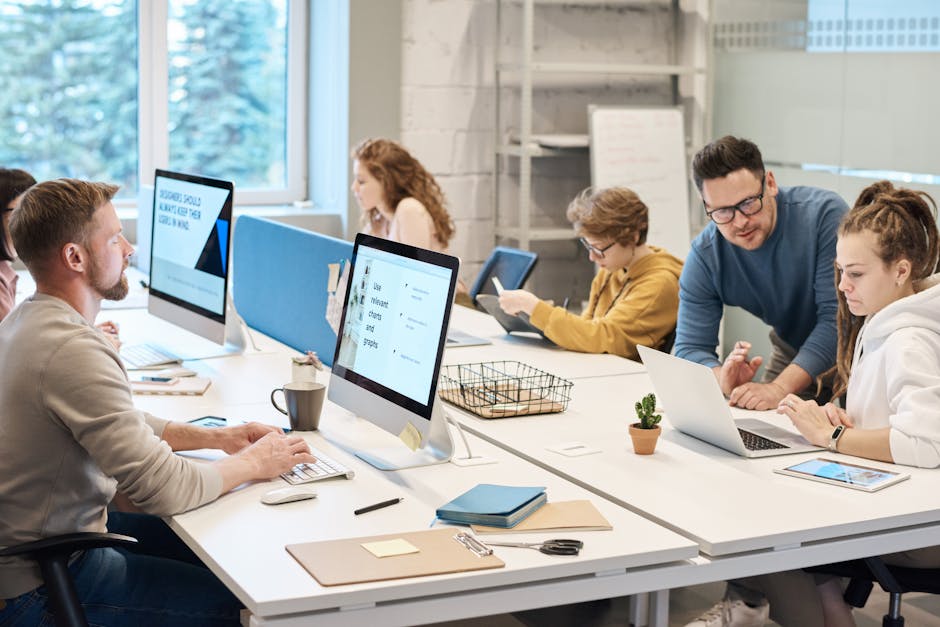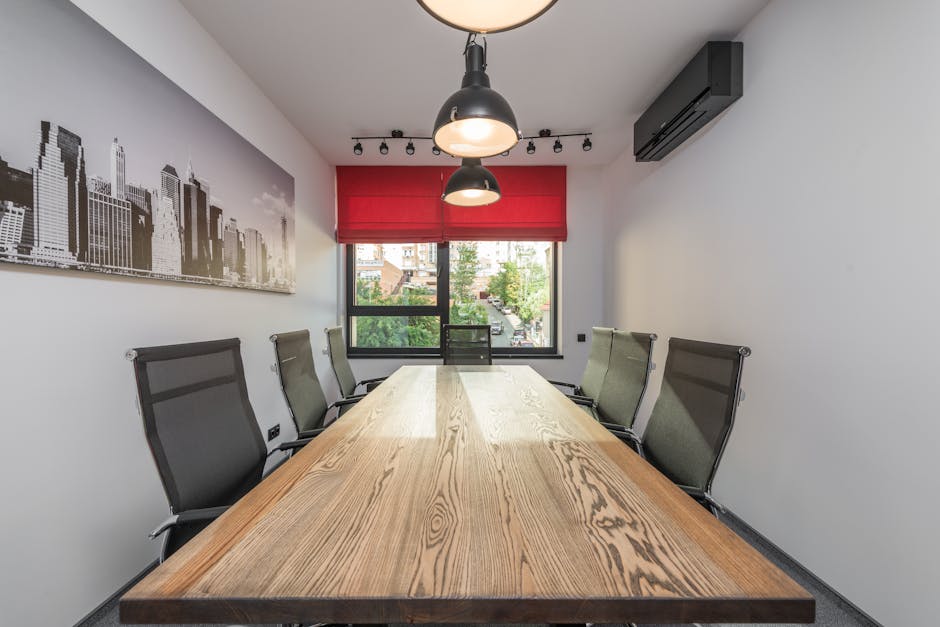Creating Sustainable Workspaces: A Guide to Eco-Friendly Office Design
“This comprehensive guide explores the importance of sustainable office spaces, covering key elements of eco-friendly design, implementation strategies, and future trends. Learn how to create a workspace that benefits both the environment and employee well-being. ”

The Rise of Sustainable Workspaces
In today's environmentally conscious world, businesses are increasingly recognizing the importance of creating sustainable workspaces. As organizations strive to reduce their carbon footprint and promote employee well-being, the concept of sustainable office design has gained significant traction. This article explores the key elements of eco-friendly office spaces, implementation strategies, and the numerous benefits they offer.

Understanding Sustainable Office Design
Sustainable office design goes beyond simply using recycled materials or energy-efficient lighting. It encompasses a holistic approach to creating workspaces that minimize environmental impact while maximizing employee comfort and productivity. The core principles of sustainable office design include:
- Energy efficiency
- Waste reduction and management
- Use of eco-friendly materials
- Optimization of natural resources
- Promotion of employee health and well-being
By incorporating these principles, businesses can create office spaces that are not only environmentally responsible but also conducive to increased productivity and job satisfaction.
Key Elements of a Sustainable Office Space
Energy-Efficient Lighting and Equipment
One of the most impactful ways to create a sustainable office is by implementing energy-efficient lighting and equipment. This includes:
- LED lighting systems with motion sensors
- Energy Star-certified computers, printers, and other office equipment
- Smart power strips to reduce phantom energy consumption
These measures not only reduce energy consumption but also lead to significant cost savings over time.
Waste Management and Recycling Programs
Effective waste management is crucial for any sustainable office. Implementing comprehensive recycling programs and encouraging employees to reduce waste can make a significant impact. Consider:
- Providing clearly labeled recycling bins for different materials
- Implementing a composting system for organic waste
- Encouraging the use of reusable containers and utensils in office kitchens
Biophilic Design and Natural Materials
Incorporating elements of nature into the office environment, known as biophilic design, can greatly enhance sustainability and employee well-being. This can include:
- Indoor plants and living walls
- Natural materials like wood and stone in furniture and decor
- Maximizing natural light through strategic window placement
Biophilic design not only improves air quality but also has been shown to reduce stress and increase productivity.

Implementing Sustainable Office Practices
Creating a sustainable office space requires more than just design changes. It involves fostering a culture of sustainability among employees and implementing eco-friendly policies.
Encouraging Sustainable Employee Habits
Educating and encouraging employees to adopt sustainable habits is crucial for the success of any green office initiative. This can include:
- Promoting paperless practices and digital document management
- Encouraging the use of reusable water bottles and coffee mugs
- Implementing a "turn it off" policy for lights and equipment when not in use
Promoting Alternative Transportation
Reducing the carbon footprint associated with employee commutes is an important aspect of office sustainability. Consider:
- Offering incentives for using public transportation or carpooling
- Providing secure bicycle storage and shower facilities for cyclists
- Implementing flexible work arrangements to reduce overall commuting
Measuring and Monitoring Environmental Impact
To ensure the effectiveness of sustainable office initiatives, it's important to regularly measure and monitor environmental impact. This can involve:
- Installing energy monitoring systems to track consumption
- Conducting regular waste audits
- Surveying employees on the effectiveness of sustainability programs
By tracking these metrics, businesses can identify areas for improvement and demonstrate the tangible benefits of their sustainability efforts.
The Benefits of Sustainable Office Spaces
Implementing sustainable office design offers numerous benefits for businesses, employees, and the environment:
- Reduced operating costs: Energy-efficient systems and waste reduction lead to lower utility bills and operational expenses.
- Improved employee health and productivity: Better air quality, natural lighting, and ergonomic design contribute to healthier and more productive employees.
- Enhanced brand reputation: Demonstrating a commitment to sustainability can improve a company's image and attract environmentally conscious customers and employees.
- Compliance with regulations: Many regions are implementing stricter environmental regulations for businesses, and sustainable offices help ensure compliance.
- Positive environmental impact: Reducing energy consumption and waste contributes to overall environmental conservation efforts.
Future Trends in Sustainable Office Design
As technology advances and environmental concerns grow, several trends are emerging in sustainable office design:
Smart Building Technologies
The integration of smart building technologies is set to revolutionize sustainable office spaces. These systems can automatically adjust lighting, heating, and cooling based on occupancy and time of day, further optimizing energy usage.
Circular Economy Principles
The concept of a circular economy, where resources are reused and recycled rather than discarded, is gaining traction in office design. This includes using furniture made from recycled materials and designing spaces with future adaptability in mind.
Wellness-Focused Designs
With an increasing focus on employee well-being, future office designs are likely to incorporate more elements that promote physical and mental health, such as standing desks, meditation rooms, and outdoor work areas.

Conclusion: Embracing Sustainable Office Design
Creating a sustainable office space is not just an environmental imperative; it's a smart business decision. By implementing eco-friendly design principles and fostering a culture of sustainability, organizations can reduce their environmental impact, improve employee well-being, and realize significant cost savings.
As we move towards a more sustainable future, businesses that prioritize green office design will be well-positioned to attract top talent, meet regulatory requirements, and contribute to global environmental conservation efforts. The journey towards sustainability may present challenges, but the long-term benefits for businesses, employees, and the planet make it a worthwhile endeavor.
By embracing sustainable office design, we can create workspaces that not only meet the needs of today's businesses but also contribute to a healthier, more sustainable world for future generations.